Affiliate links on Android Authority may earn us a commission. Learn more.
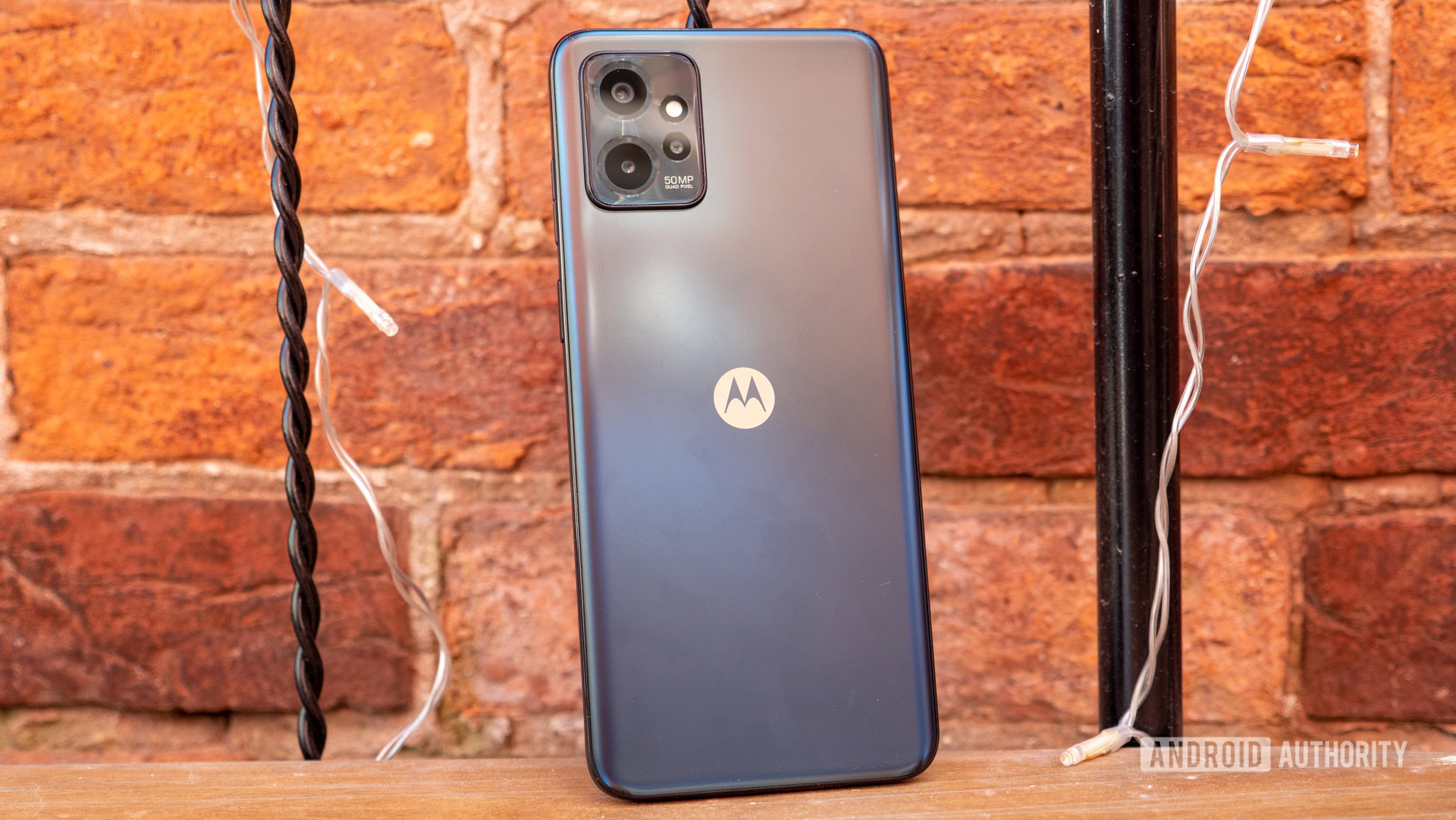
Motorola Moto G Power 5G
What we like
What we don't like
Motorola Moto G Power 5G
How do we define power? Do we look for strength? Speed? Longevity? Some combination of the three that’s almost impossible to nail down? To make life even more challenging, our expectations for “power” aren’t nearly the same for a budget-friendly Android phone compared to a premium flagship. Motorola knows this better than almost everyone, with its long-standing Moto G Power entering its 11th generation. It picks up a few critical improvements for 2023, offering 5G speeds and a 120Hz display for the first time, but are they enough? Find out in our Motorola Moto G Power 5G review.
Update, March 2024: Added info about future software updates.
Motorola Moto G Power 5G review: What you need to know
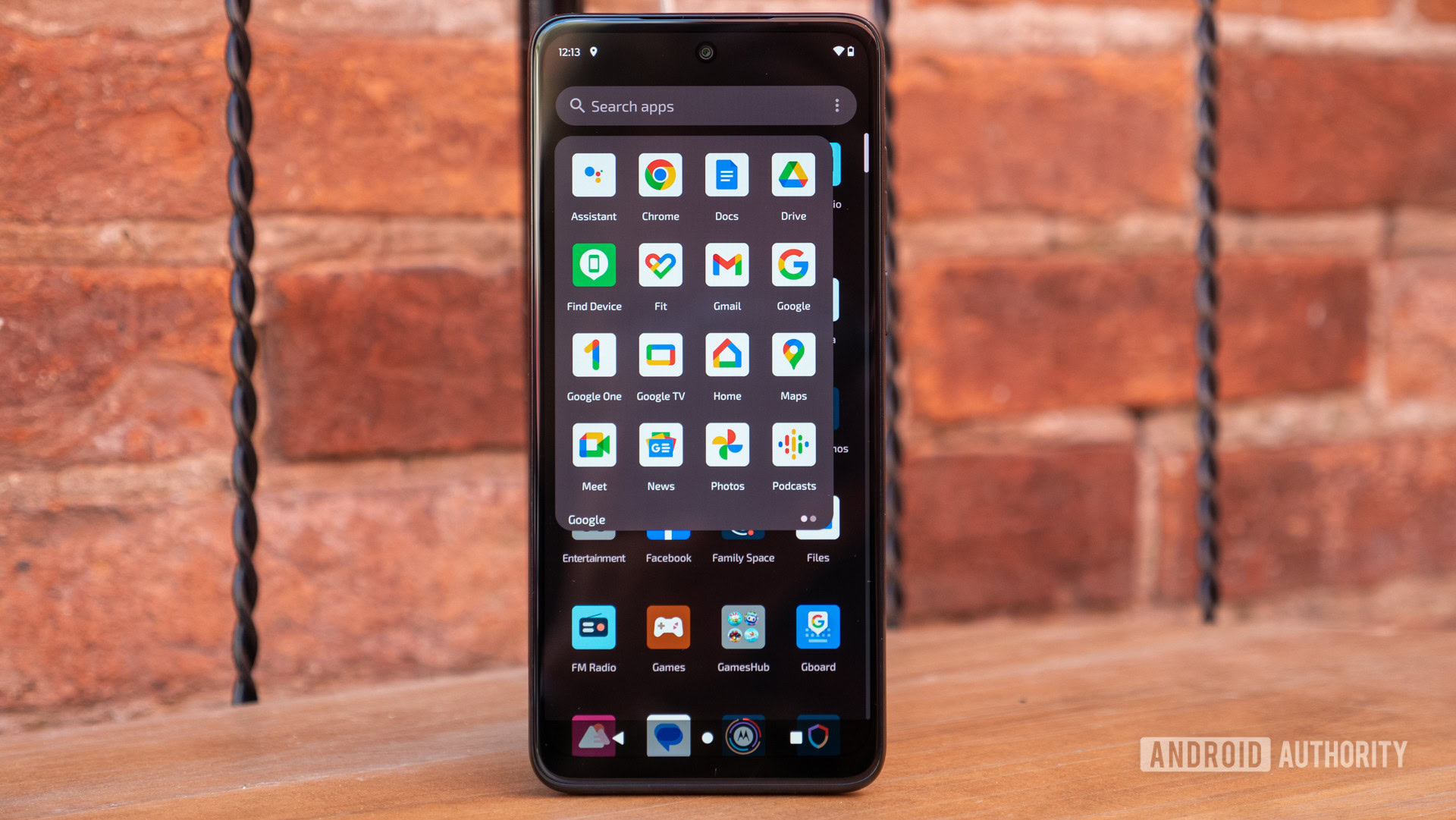
- Motorola Moto G Power 5G (6GB/256GB): $299
Motorola’s Moto G series is one of the longest-standing budget lineups, and it seems to grow each year. Motorola has also been adding 5G to the mix in recent years. Now, its Moto G Power 5G (2023) is one of the most affordable Power-line models to offer those high-end speeds, sitting below the Moto G Stylus 5G (2023) but above the Moto G 5G (2023) and Moto G Play (2023) — the last of which sticks with 4G-only.
The Moto G Power 5G keeps things pretty simple in terms of materials, pairing a plastic PMMA frame and back panel with a Gorilla Glass 3 display. The screen itself offers quite a few upgrades over the outgoing Moto G Power (2022), including a 120Hz refresh rate and a Full HD+ resolution. It’s interrupted only by a 16MP punch-hole selfie camera. Shifting back to the plastic frame, the Moto G Power’s buttons and ports are all in familiar places. It packs a volume rocker and side-mounted fingerprint reader on the right side, with a SIM tray and microSD slot holding down the left edge. The headphone jack and bottom-firing speaker flank the USB-C 2.0 port along the bottom.
Once you flip the Moto G Power over, you’ll notice just a bit of Motorola Edge 30 Fusion inspiration. The square camera bump is almost identical to Motorola’s flagship, with three lenses and a flash. Motorola’s 50MP primary shooter is the star of the show, with 2MP macro and depth options to back it up. Unlike the colorful Edge 30 Fusion, however, the Moto G Power 5G only comes in Mineral Black and Bright White.
Motorola's Moto G Power 5G picks up several Edge 30 Fusion design cues without sacrificing its budget-friendly price.
Inside the plastic shell lies the Moto G Power’s main upgrade — a MediaTek Dimensity 930 chipset. The mid-range 6nm processor brings 5G to the Moto G Power for the first time, and it’s paired with a healthy 6GB of RAM and 256GB of onboard storage. As for charging, the Motorola Moto G Power 5G supports up to 15W wired power, though it only comes with a 10W charger bundled in the box.
Mentioning the box, Motorola is sticking with its green initiative of 100% plastic-free packaging. The tan package also includes a USB-A to USB-C cable, SIM ejector tool, and essential paperwork — all wrapped in a rice paper-like material.
The Motorola Moto G Power 5G unit I tested arrived running Android 13 and the February 1, 2023 security patch. Unfortunately, Motorola’s budget-friendly device is limited to just one full Android update and three years of bi-monthly software patches. While the phone is scheduled to receive Android 14, it hasn’t yet rolled over to the new Android version as of March 2024. It’s unclear when the patch will be made available to users.
The Motorola Moto G Power 5G is available unlocked from Best Buy, Amazon, and Motorola’s site. If you’re hoping for a carrier discount, the Moto G Power 5G is also available from a few MVNOs, including Xfinity Mobile and Spectrum Mobile.
What I like about the Moto G Power 5G
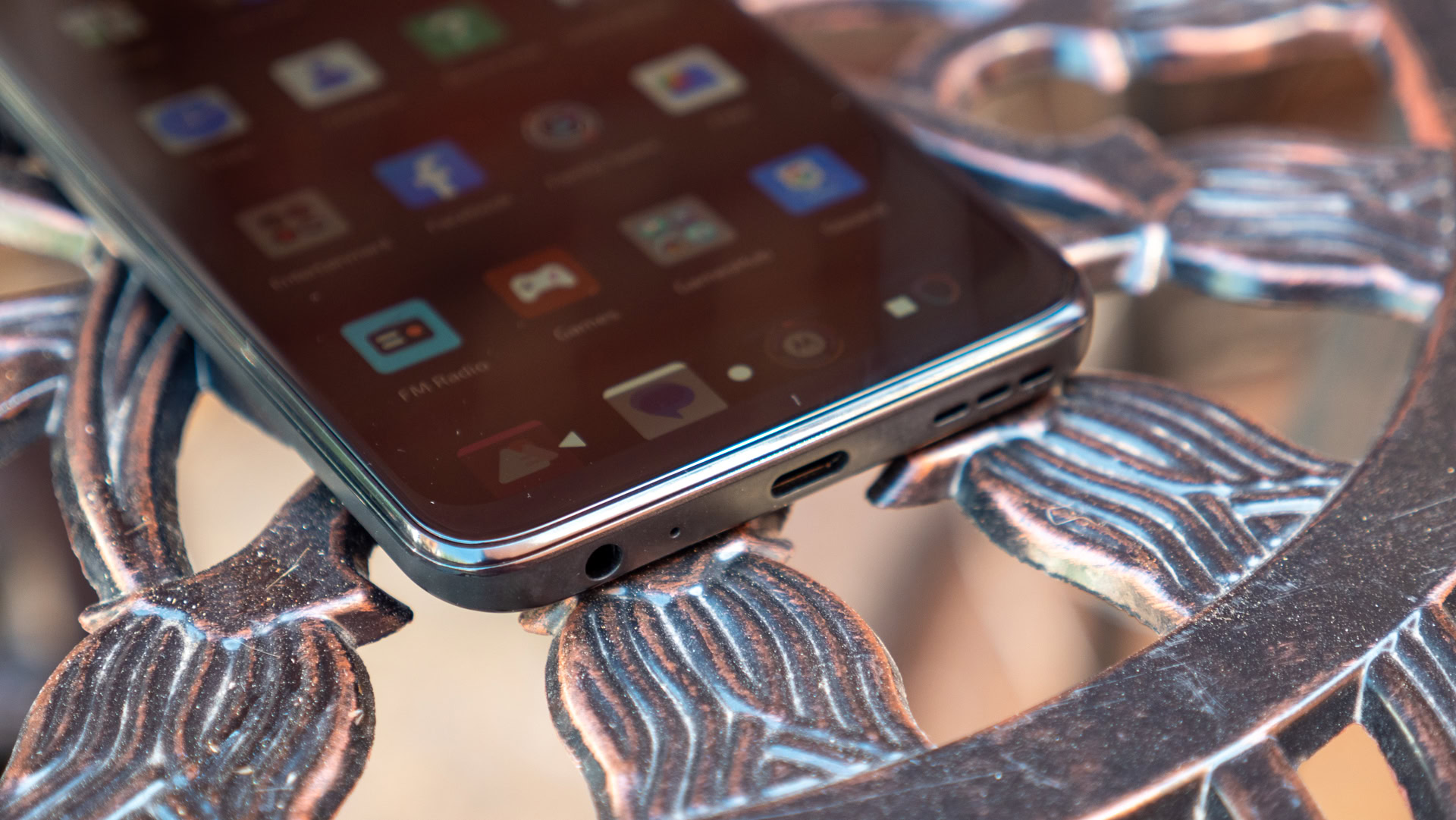
After a pretty underwhelming misstep with its Moto G Power model in 2022, Motorola seems to have remembered that the Power series needs some, well, power. It carries upgrades both inside and out, though none is more important than the move to MediaTek’s Dimensity 930 chipset. The mid-2022 processor offers a solid leap over the previous Helio G37 chipset, which we regarded as one of the Moto G Power (2022)’s most significant flaws.
MediaTek’s mid-range 5G chipset swaps to a 6nm process and picks up major bumps to both the CPU and GPU speeds. Numbers on a spec sheet don’t often mean much, but the faster chip results in a Moto G Power iteration that’s much quicker and smoother than its predecessor in daily use. Apps open quickly, and I rarely stuttered through menus and long Spotify playlists — both a regular occurrence on the last non-5G model.
On top of the improved processing power, the Moto G Power 5G now has respectable base RAM and storage. After years of floundering with 4GB and 64GB out of the box, respectively, the unlocked model arrives with 6GB and 256GB, with the latter still expandable via microSD. The upgrade again gives the Moto G Power 5G a little extra punch that’s been lacking for the last few years.
The Moto G Power 5G is loaded with hardware upgrades, from extra RAM and storage to an amped-up refresh rate and Full HD+ display.
I mentioned some surface-level upgrades, too, with the new 120Hz display standing chief among them. Motorola kept to the same 6.5-inch panel size but bumped it to a Full HD+ resolution to match the improved refresh rate. These upgrades are often almost unnoticeable on budget phones, but the Moto G Power 5G is visibly sharper and smoother than its predecessor. You can lock the refresh rate to 60Hz or 120Hz as needed, but I spent most of my time on Auto, which can swap between the two to balance battery life with fluidity.
I used the Moto G Power 5G to watch The Film from Boygenius in anticipation of an upcoming concert, as well as a few yoga workouts as part of Nike Training Club. Nike’s workouts were easy to follow in broad daylight, thanks in part to the well-lit studios, while the slightly darker video from Boygenius required a slightly darker room with less reflection coming off the screen. It’s not really a surprise to say that dimly lit videos don’t perform well in bright lighting, but the option to do yoga outside while I recover from a foot injury is one I’ll always take.
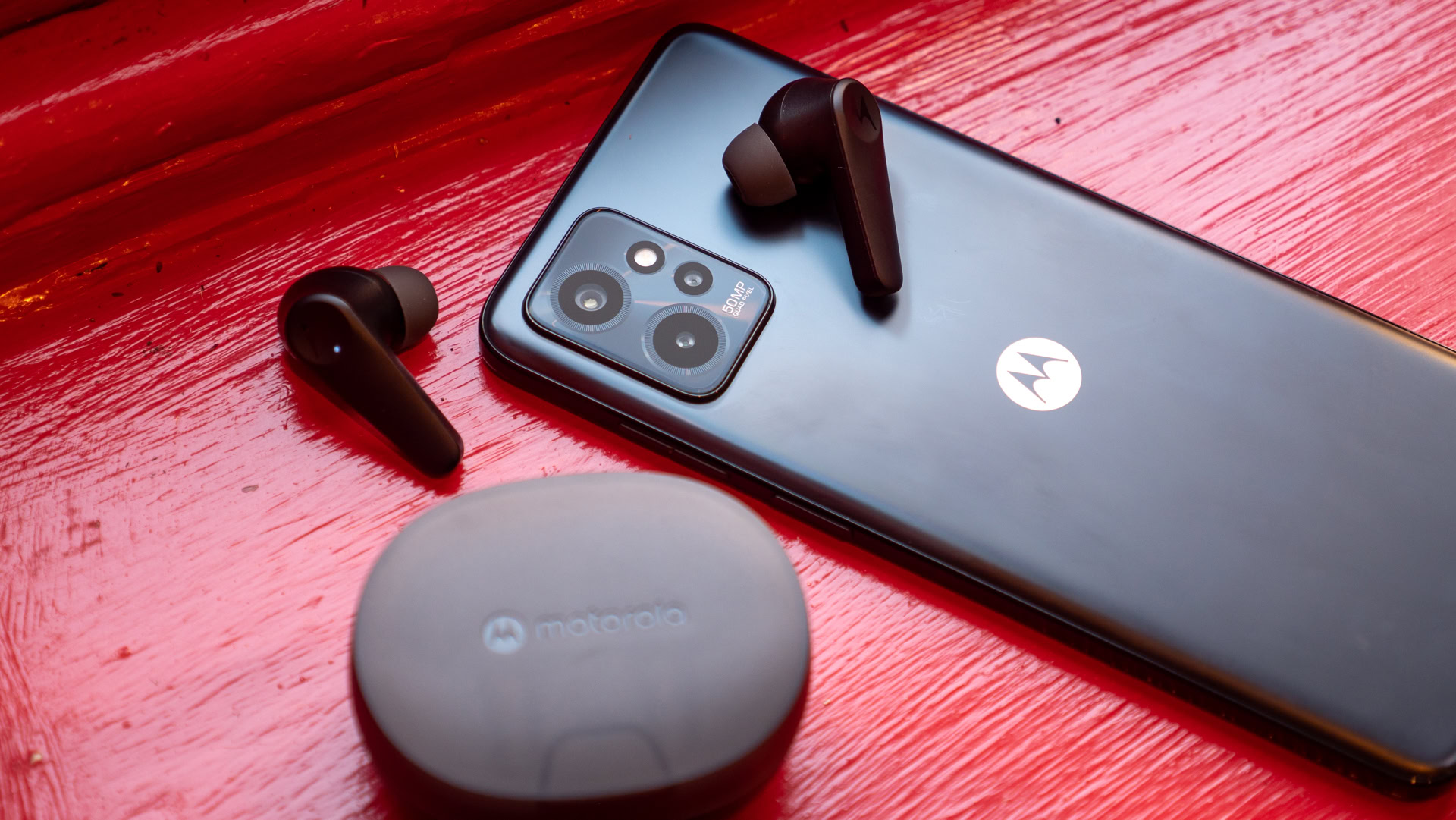
Motorola’s display improvements also pair nicely with the stereo speakers — one down-firing unit and the earpiece — for playback that stays pretty crisp, even at higher volumes. Some of this is likely thanks to Dolby Atmos tuning, which you can toggle on and off as needed. For the most part, though, Dolby Atmos mostly amplifies the Moto G Power’s volume output when it recognizes music. As it turns out, Boygenius’s The Film was a good test for the speakers at a variety of volumes. It combines songs from The Record, and swings from softer guitar and piano sounds to louder rock-inspired jams. I flipped the Dolby Atmos switch a few times, and the playback was noticeably louder when active. The Moto G Power 5G also has a headphone jack, which is an increasing rarity.
While we’re praising Motorola’s overall design chops, I like that the Moto G Power 5G takes after some flagship traits. We’ve seen Samsung model its recent Galaxy A models after the Galaxy S23 series with the Galaxy A14 5G, and now Motorola is following suit. The Moto G Power 5G recalls the Motorola Edge 30 Fusion with its redesigned camera bump and matte finish. Motorola’s Mineral Black and Bright White finishes also keep fingerprints and smudges to a minimum, unlike the high-gloss panels many budget devices sport.
Finally, like a broken record (but in a good way), I’ve always found that mid-to-budget-tier 5G processors and hefty 5,000mAh batteries are a match made in heaven. The Moto G Power 5G sips its way through life, offering just enough power to keep you scrolling social media and streaming Netflix without burning through its juice. I easily managed a day and a half to two days between charges. While perhaps not the absolute “best battery life phone,” as Motorola proclaims in its marketing, it definitely earns its power moniker.
What I don’t like about the Moto G Power 5G
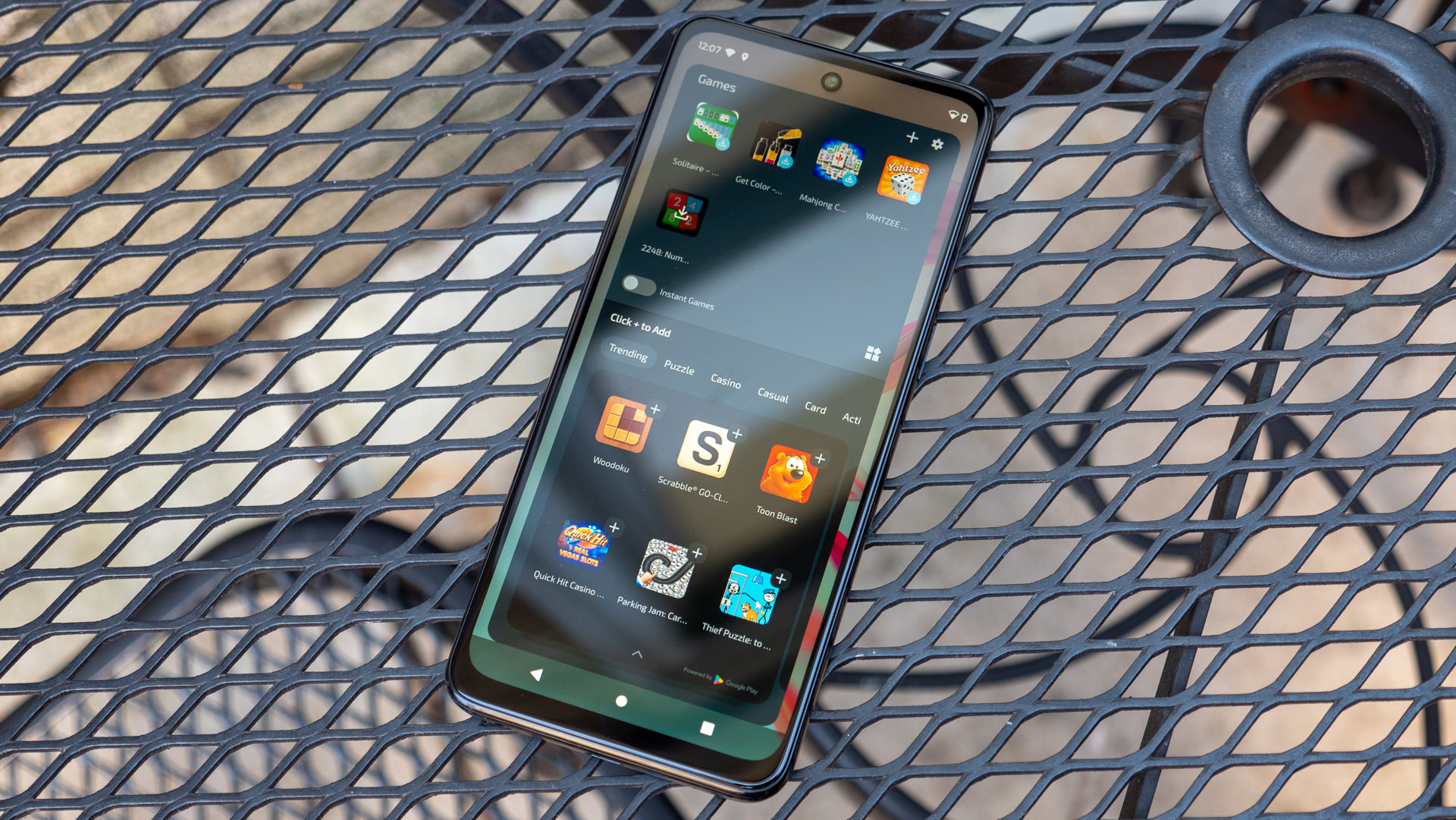
I’m no stranger to the Motorola Moto G series. The Moto G Power (2021) was one of my first reviews at Android Authority, and I’ve tested and reviewed half a dozen more since then, plus several Edge flagships — I know my Motos. As such, I thought I had a pretty good idea of what I was getting into with Motorola’s software. Motorola’s My UX skin has long been one of my favorites, with its almost-stock style and deference to Google’s own apps. Well, that’s changed, and not for the better.
Yes, My UX still looks like stock Android for the most part, but it’s no longer content to stick with Google’s basic apps. Motorola has implemented a series of hubs — one for entertainment, one for shopping, and one for games — which essentially function as ads for apps on the Play Store. Each hub shows up as a folder and is populated by apps you don’t necessarily have downloaded to your phone, but that Motorola thinks you’ll want.
Further, the Moto G Power 5G decided that it needs to tailor bloatware to your data, adding certain apps based on your age and gender. As a result, I ended up with Words of Wonders and Publishers Clearing House Plus in my app drawer — neither of which I had ever heard of, let alone asked for. Thankfully, you can uninstall most of this additional bloat, including the non-tailored bloat like Facebook and TikTok, but the influx of ads is a huge disappointment compared to Motorola’s usual sleek standard.
Which algorithm decided that I needed Publishers Clearing House Plus as part of my tailored bloatware? Also, tailored bloatware? Why, Motorola?
Adding to the software woes, Motorola will only give its Moto G Power 5G a single Android version update. Three years of security patches is a decent promise and an extra year over the Moto G Power (2022), but the very limited version support means that the Moto G Power 5G is only guaranteed Android 14, which is right around the corner at the time of this update. The short support also seems to go against Motorola’s sustainability commitment, no matter how green the packaging may be.
On the bright side, Motorola finally gave its Moto G Power a charging boost, rising to 15W wired speeds. Unfortunately, it must have forgotten to tell whoever loads the boxes because you only get a 10W charger included. Sure, getting a charger in the box is handy if you don’t have one, but it’s disappointing that you need to supply your own charger for top speeds, modest as they may be. And even with a brick at the 15W rate it takes about two hours plugged into the wall to achieve a full charge. That’s not awful, but it is behind other options in this price tier.
Oh, and there’s still no NFC chip, which means no wireless payments or Nearby Share support. This is nothing new for Motorola’s budget lineup, but there are many other affordable devices that have NFC chips at similar price points.
Motorola Moto G Power 5G camera review
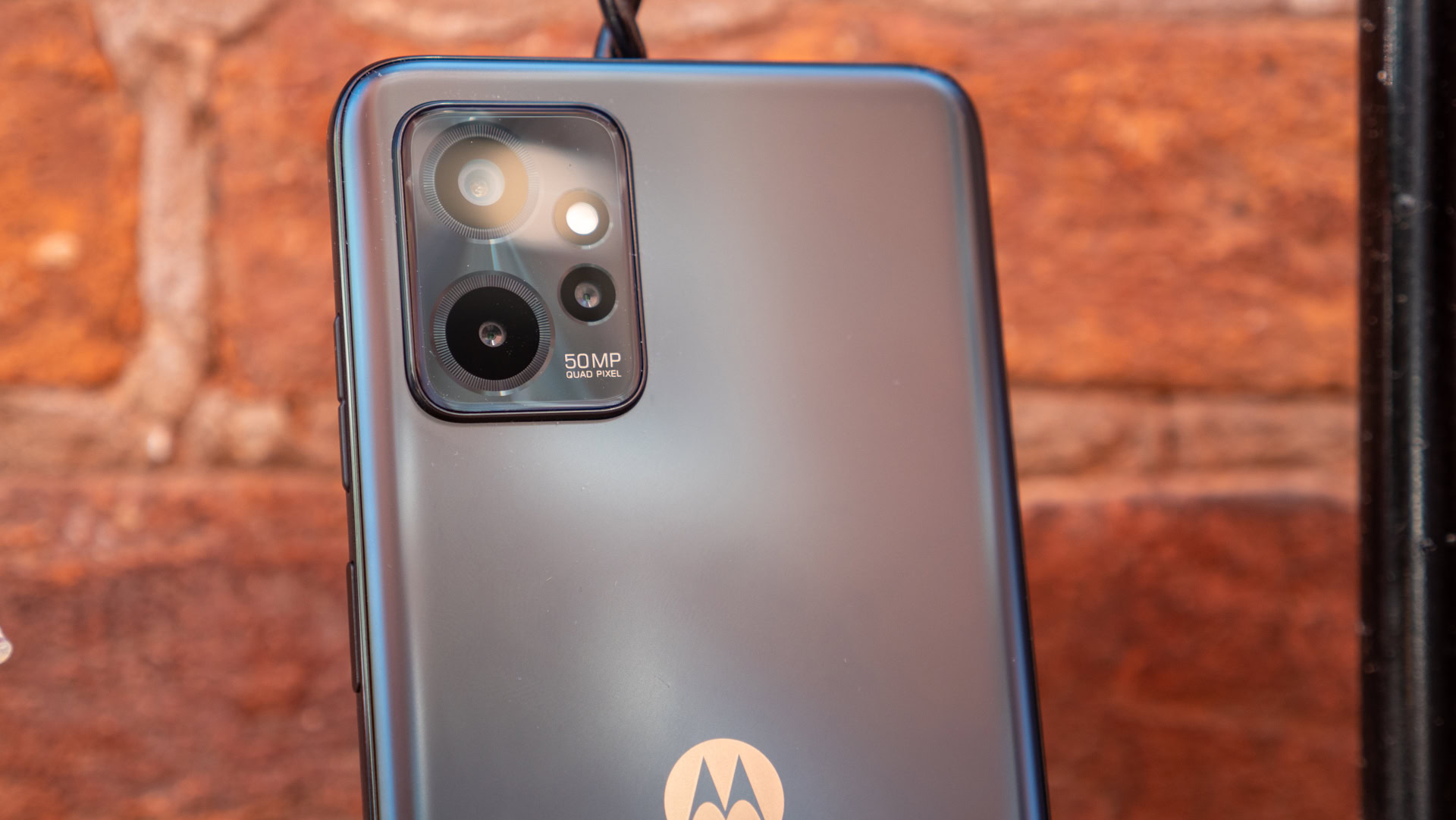
Don’t let the Moto G Power 5G’s revamped camera bump fool you — although it looks like the more capable Edge 30 Fusion, the hardware is the same as its predecessor. That means the 50MP wide sensor is back to compete against the best budget camera phones and continues to bin to 12.5MP right out of the box. As usual, you can hop to the full resolution if needed, though the default images are good enough that you shouldn’t need to very often. Flanking the primary camera are 2MP macro and depth sensors, so don’t expect any funky ultrawide snaps or improved zoom (which we wouldn’t at this price anyway).
While I’m not sold on Motorola’s software tweaks to My UX in general, I’m happy to report that the camera app escaped untouched. It remains similar to Google’s default layout, with just enough tweaks like Pro mode to give you in-depth controls. The zoom toggle bounces you back and forth from macro mode to 1x zoom, which isn’t surprising given the Moto G Power 5G’s lack of ultrawide or telephoto lenses. It also hides modes like Color Picker, which lets you focus on a particular shade while dropping other colors to black and white, and Dual Capture, which works like BeReal, capturing an image from the selfie camera and primary camera simultaneously.
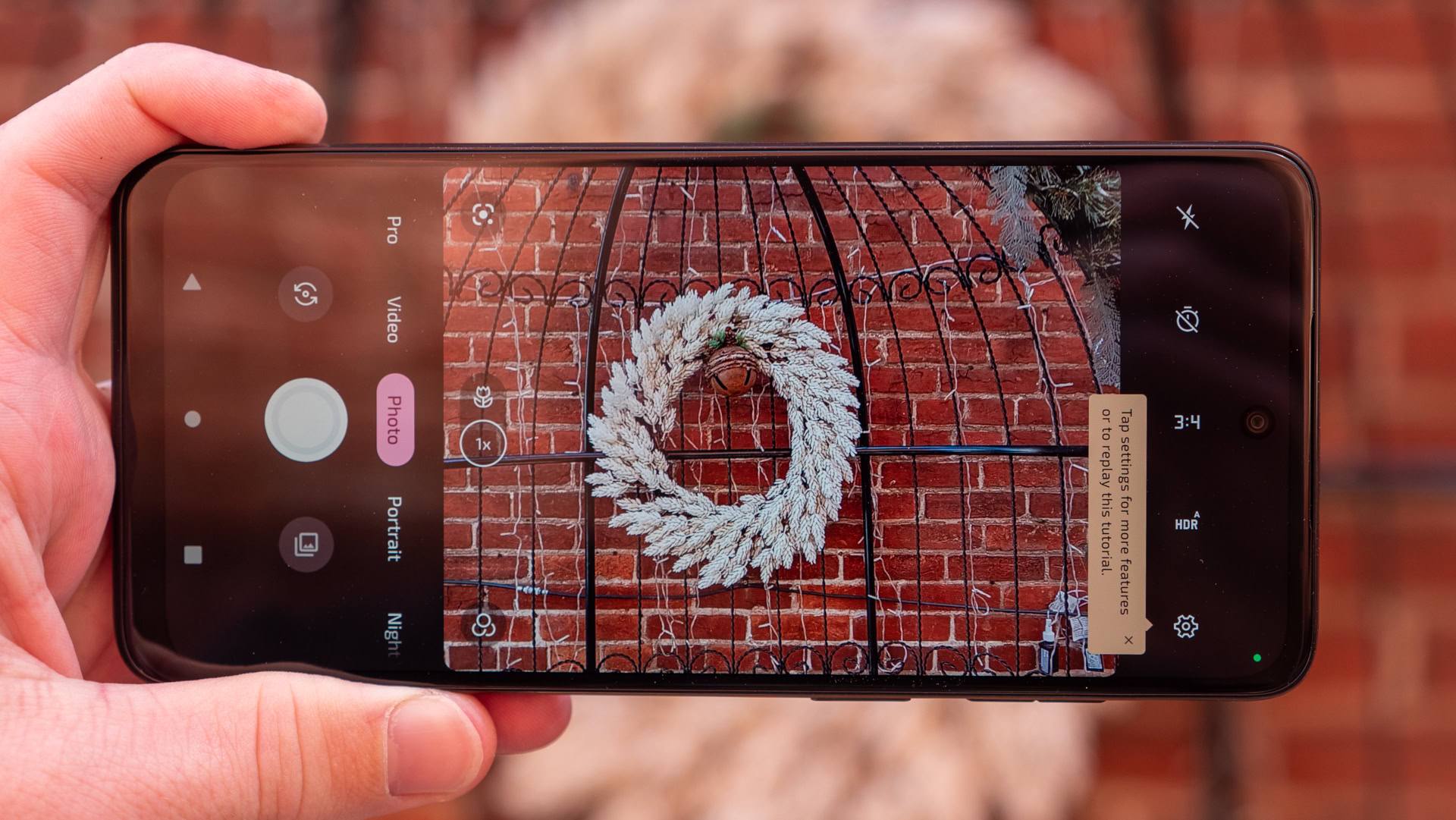
I spent most of my time testing out the Moto G Power 5G’s primary camera, which wasn’t a difficult choice given the lack of peripheral punch. While it’s not the most powerful setup, I came away happy enough with the results from the 50MP shooter. It’s tuned to a natural color profile, meaning that what you see is pretty much what you get. The tulips in the bottom center are spot on, with the colors fading just slightly as the sun went down. I’m also pleased with the image looking up at tree branches, as each tree stays distinct without the thin branches bleeding into one another.
While the color and clarity are generally good, Motorola’s portrait mode was hit or miss during my testing. It’s spot on for both the man reading the newspaper and the lion, but it comes up short in the image of the pub sign. Part of the trouble may be down to the fact that you can’t zoom in portrait mode, meaning that it was tougher to isolate the sign from the building itself. This might not be an issue for you — most people will spend more time snapping pictures of people and animals — but you have to be comfortable zooming with your feet, as they say.
The Moto G Power 5G tops out at up to 8x digital zoom, though the lack of stabilization means you need to rely on a steady hand and you’ll quickly sacrifice key details as you pinch in. The faces of the band members start to get fuzzy at 4x zoom, with the guitar player to the left looking especially soft at 8x. This is likely a combination of the lower light and the fact that he’s moving, but still disappointing to see. Of course, this is digital zoom, so we’re not expecting wonders anyway, but Motorola’s processing isn’t doing much to help.
Dedicated macro lenses are not — and will never be — one of my favorite features of budget Android camera phones, especially at a miserably low 2MP. However, the Moto G Power 5G does try to put its close-up sensor to good use. I was pretty happy with the color and clarity of the metal flower second from the left and the green leaves all the way to the right. The metal flower is perhaps the sharpest macro image I’ve ever gotten from a 2MP macro lens, likely because metal doesn’t sway in the wind. As for the leaves (which aren’t poison ivy, I checked), I’m impressed by the level of detail within the leaves themselves. That said, I’d still rather have a half-decent ultrawide camera with macro capabilities, or just a basic ultrawide shooter instead of a dedicated macro camera.
The Moto G Power 5G’s low-light performance is acceptable, as seen with the band and the tulips above, but its dedicated Night Mode is less impressive. It’s pretty slow — the image below took five seconds of standing perfectly still — and doesn’t bring all that much light back into the picture. Yes, the car in the mural is slightly more visible, and the lines of the houses are sharper, but I’d just as soon stick to daylight photography if I knew I wanted to capture an image.
Wrapping up the Moto G Power 5G’s modest photography chops, we have the 16MP selfie shooter. I didn’t have any issues with the portrait edge detection, which worked pretty well with my tricky hair, but the overall clarity left me wanting more. Yes, you can see my hair clearly, but I can’t shake the fact that it seems like Motorola is using a beauty filter on my skin. The background details also get pretty soft when you look at the trees across the stream. I can’t read the initials carved into the tree behind me, even though it’s just a few feet into the background.
The Motorola Moto G Power 5G might not be a top pick if you want a great video camera phone. It’s capped at 1080p quality from both the front and rear cameras, and the selfie shooter stops at 30fps. You can jump to 60fps on the rear camera, which is better than the 30fps cap of many budget phones, but there aren’t any special shooting modes outside Dual Capture.
Motorola Moto G Power 5G specs
| Motorola Moto G Power 5G (2023) | |
|---|---|
Display | 6.5-inch LCD Full HD+ resolution (2,400 x 1,080) 405ppi 120Hz refresh rate 20:9 aspect ratio |
CPU | MediaTek Dimensity 930 |
RAM | 4GB or 6GB |
Storage | 128GB or 256GB internal microSD card supported up to 1TB |
Power | 5,000mAh battery 15W wired charging supported 10W charger in box |
Software | Android 13 |
Cameras | Rear: - 50MP main (ƒ/1.8, 0.64μm, PDAF) - 2MP macro (ƒ/2.4, 1.75μm) - 2MP depth (ƒ/2.4, 1.75μm) Front: - 16MP single (ƒ/2.4, 1.0μm) |
Video | Rear Main Camera: - FHD (60/30fps) Rear Macro Camera: - HD (30fps) |
Audio | Stereo speakers Dual mic Bluetooth 5.3 |
Ports | USB-C (2.0) 3.5mm headphone jack Single SIM slot microSD card slot |
Durability | IP52 Gorilla Glass 3 |
Connectivity | Wi-Fi 802.11 a/b/g/n/ac Bluetooth 5.3 NFC support FM radio support |
Bands | 5G: NR band n2/n5/n7/n12/n25/n30/n41/n66/n71/n77/n78 4G: LTE band 1/2/3/4/5/7/8/12/13/14/17/20/25/26/29/30/38/39/40/41/48/66/71 3G: WCDMA band 1/2/4/5/8 2G: GSM band 2/3/5/8 |
Dimensions and weight | 163.1 x 74.8 x 8.5mm 185g |
Colors | Mineral Black, Pearl White |
In-box contents | Moto G Power 5G (2023) 10W wall charger USB cable SIM tool Guides |
Should you buy the Motorola Moto G Power 5G?
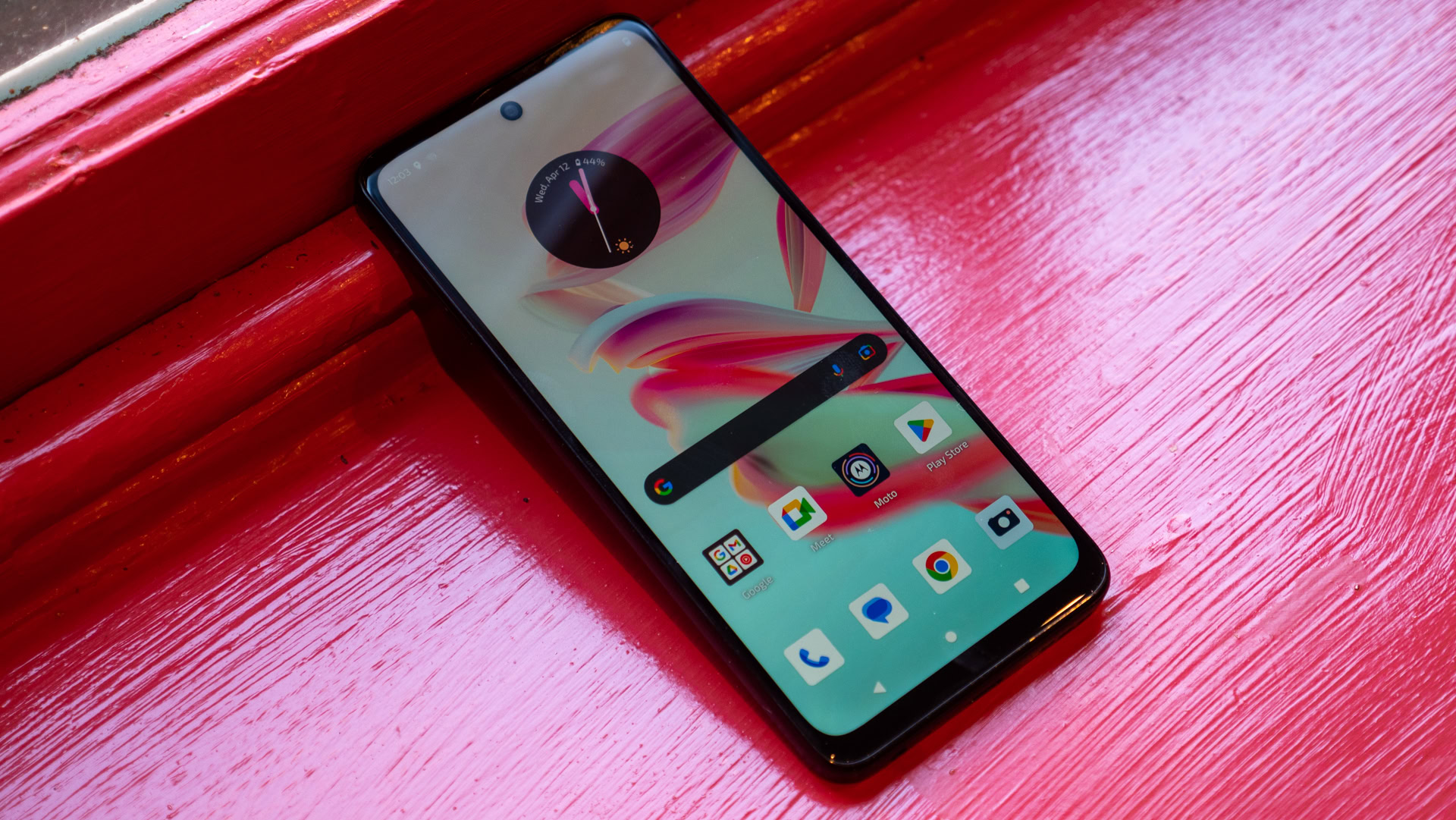
Motorola put the power back into its Moto G Power — at least most of it. Bringing 5G speeds and a full slate of hardware upgrades is probably the best way Motorola could have put the underwhelming previous model out of our minds. The improved processor and upgraded RAM and storage are worth the cost of entry on their own, especially if you’re looking for a starter smartphone that doesn’t suffer from lagging menus and generally poor performance.
Motorola didn’t stop there, bumping the display to Full HD+ and adding a 120Hz refresh rate, which is noticeably better than its predecessor. And while the overall camera setup is the same as the Moto G Power (2022), it still delivers solid shots from the primary camera. Maybe one day we’ll live without 2MP dedicated macro lenses, but we’re not there yet.
Unfortunately, for all of the Moto G Power 5G’s hardware upgrades, its slightly revamped software leaves me scratching my head. Motorola made its name on a light Android skin with no ads and almost no tweaks and then decided to turn it into a walking, talking Play Store sales pitch. Mix in the tailored bloatware (seriously, what is Publishers Clearing House Plus, and why is it on my phone?), and My UX is sliding down our list of favorites.
Motorola brought power back to its Moto G Power, but Play Store ads and tailored bloatware might be too steep a price to pay for some.
In the end, this is the best Moto G Power model in several years, but Motorola wants you to pay the price for all its renewed power, both literally and figuratively. I can live with the $50 increase over the previous generation; that covers the 5G and increased RAM and storage, as well as all the other quality-of-life improvements. But the ads and tailored bloatware are a relatively high price to pay when stacked against the best in the affordable Android scene.
Samsung’s Galaxy A14 5G ($199 at Amazon) is a great pick that offers several of the Moto G Power 5G’s best features for $100 less. It packs a similar camera setup, an outstanding update policy commitment, and a Galaxy S23-inspired design. Samsung’s budget device also hangs onto the headphone jack, though it does drop stereo playback for a single speaker. The OnePlus Nord N300 ($228 at T-Mobile) might be worth a look as well, especially if you crave fast charging speeds. It bumps from the 10-15W rates of many budget phones up to 33W and still comes with a charger in the box. It’s just a shame OnePlus only offers two years of any kind of software support.
If you’re willing to stretch your budget a bit further, you can get quite a lot more for your money. The Google Pixel 7a ($477 at Amazon) mixes some of the best flagship Pixel features, like the Tensor G2 chip, light, smooth software, and wireless charging, all at a more than reasonable price. The cheapest Pixel also picks up an aluminum frame, which feels more premium in the hand than Motorola’s plastic chassis. Samsung’s Galaxy A54 5G ($379.5 at Amazon) is another stretch pick, and it looks, feels, and often acts like a budget Galaxy S23. You also get Samsung’s four years of Android updates and five years of security patches, which is simply unbeatable compared to Motorola and even Google.

Motorola Moto G Power 5G review: FAQs
No, the Moto G Power 5G is not waterproof. However, it features an IP52 water-resistant design to offer some protection against splashes.
No, like so many budget Moto G phones, the Moto G Power 5G does not have NFC support.
No, the Moto G Power 5G does not support wireless charging, only up to 15W wired charging.
The Moto G Power 5G is available from Xfinity Mobile, Spectrum Mobile, and Metro by T-Mobile, but is compatible with other networks with sub-6GHz 5G. For the full list, check out Motorola’s website.
Motorola announced the Moto G Power 5G on April 6, 2023, before opening sales on April 13.
The Moto G Power 5G has a 5,000mAh battery with 15W wired charging.